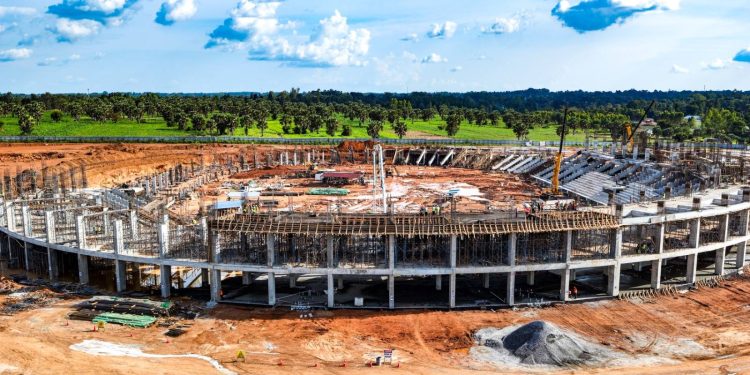Lira – The Akii Bua Olympic City Stadium in Lira City is steadily taking shape, with construction works currently at 25%, according to Hon Peter Ogwang, the Minister of State for Education & Sports (Sports).
The 20,000-seat stadium is part of Uganda’s preparations to host matches for the 2027 Africa Cup of Nations (AFCON).
“Akii Bua Olympic City Stadium in Lira City is taking shape with works currently at 25%,” said Minister Ogwang on X (formerly Twitter).

Named after John Akii-Bua, Uganda’s 1972 Olympic gold medalist in the 400m hurdles, the stadium is set to become a world-class sporting venue in Northern Uganda. The project is being executed by Egypt’s SAMCO National Construction Company under a UGX 470 billion ($129 million) contract awarded by the Ugandan government.
Construction began in December 2024, following a groundbreaking ceremony presided over by President Yoweri Kaguta Museveni in January 2025.
The stadium complex will include a 20,000-seat main stadium with an eight-lane athletics track, a 2,000-seat multi-sport indoor arena, a 25-meter semi-Olympic swimming pool, and outdoor courts for basketball, netball, volleyball, and badminton. Additionally, a parking facility for 1,000 vehicles is planned.
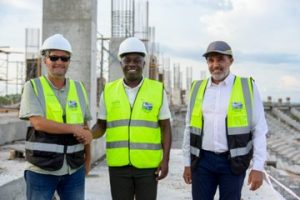
President Museveni explained that while the stadium was initially prioritised for historical reasons, Uganda’s successful AFCON bid prompted a strategic decision to develop Hoima as another host venue, given its proximity to an airport under construction.
The Lira stadium, meanwhile, is expected to cater to both soccer and athletics events during the 2027 tournament, which will be jointly hosted by Uganda, Kenya, and Tanzania.
The stadium will be located on the John Akii Bua Playground in the city centre, covering approximately 18.5 hectares. Once completed, the Akii Bua Olympic Stadium will bolster Uganda’s capacity to host international sporting events and demonstrate the country’s growing ambition in athletics and football.
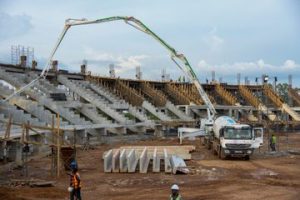
Accelerating Lango’s economic growth
The construction of Akii Bua Stadium in Lira City is highlighted by officials as a flagship project that embodies the National Resistance Movement’s (NRM) commitment to regional equity and economic transformation in the Lango sub-region. It is seen as more than just a sports venue; it’s a deliberate alignment of national priorities with grassroots impact, aiming to restore dignity, foster opportunity, and accelerate growth.
Lira Lord Mayor Sam Atul said the stadium is a “convergence of heritage and ambition,” noting that “Akii Bua brought glory to our land. Today, we channel that legacy toward building infrastructure that changes lives.” He emphasised the project’s role in creating a “stage for new dreams” and systematically developing the region’s strong athletic potential.
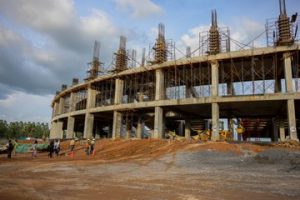
The project adheres to the NRM’s philosophy of inclusive development through a “buy and build local” approach. Project Manager Mohamed Nazir noted that over 90% of the 950-strong workforce is drawn from Lira, and materials like sand, granite, and cement are sourced locally to maximise “social impact and economic recirculation.” Nazir confirmed that the project is 30% complete and is projected to finish in October 2026, ahead of the official January 2027 deadline.
Resident City Commissioner Lawrence Egole described the stadium as a “connective strategy,” part of a broader infrastructure network that includes a 60km road to Gulu Airport and feeder roads. Egole asserted that this investment “signals a new era — one where Lango is not left behind,” noting that Lira is already a top-five revenue-generating city.
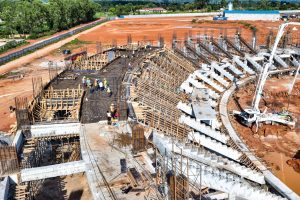
Once completed, the 20,000-capacity stadium is expected to activate local sectors by driving sports tourism, boosting hospitality, and increasing retail activity, thus energising the local economy. Entrepreneurs are already positioning themselves to meet the anticipated demand, signalling the project’s success as a powerful lever for Lango’s future.








